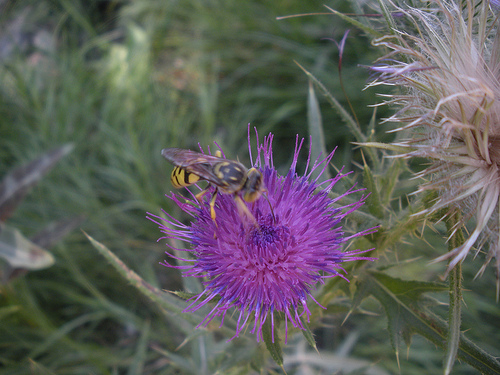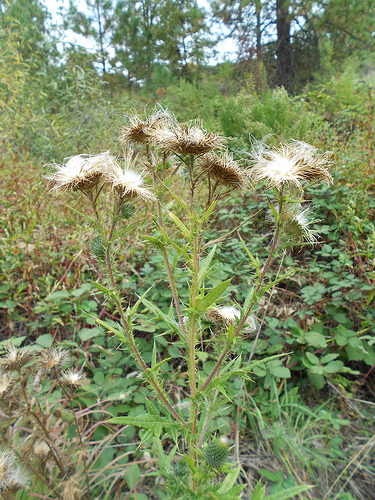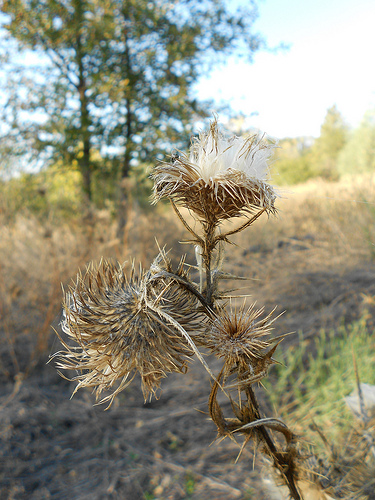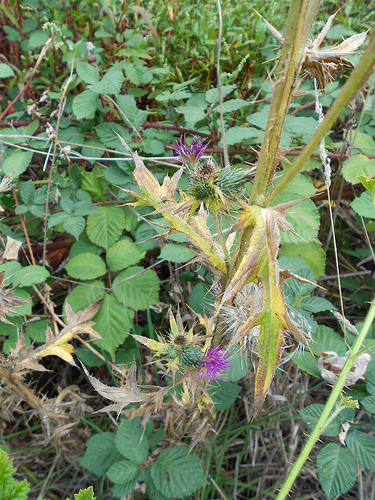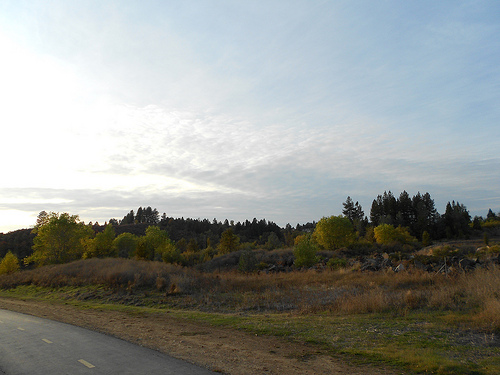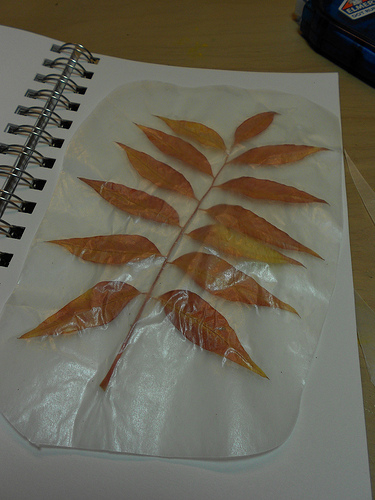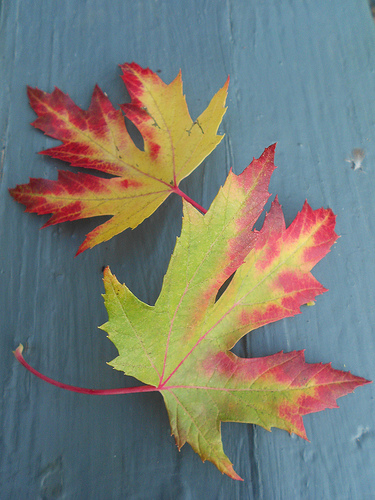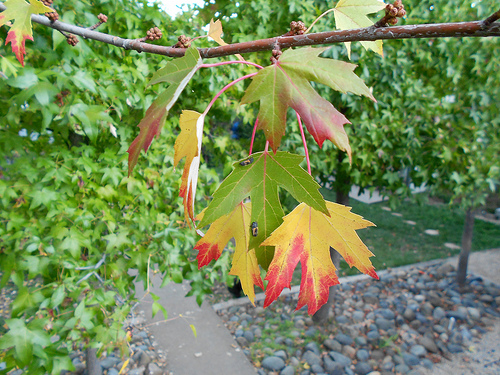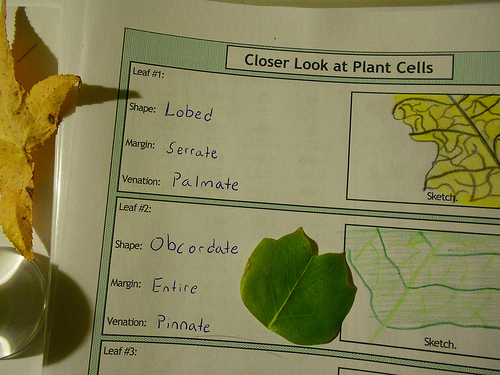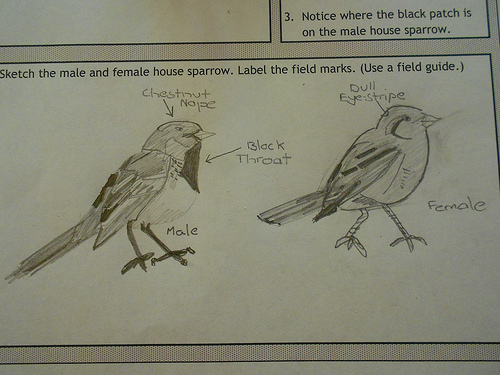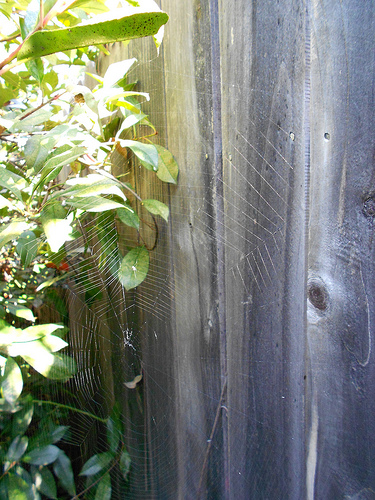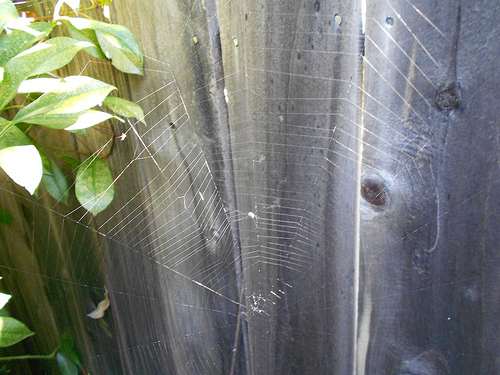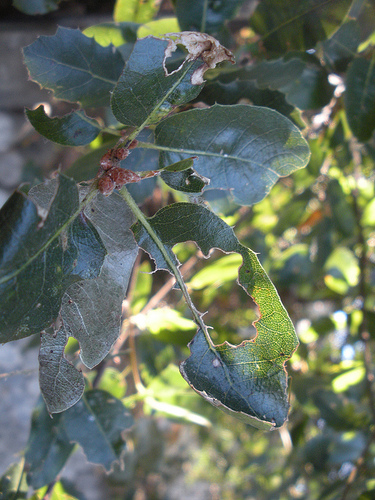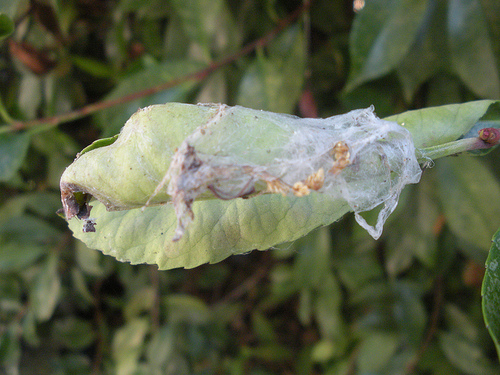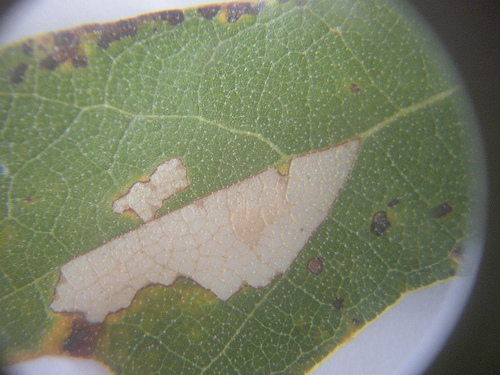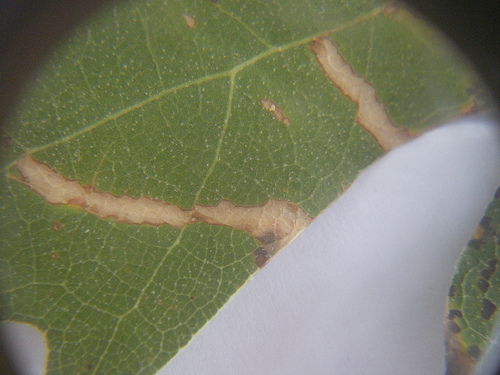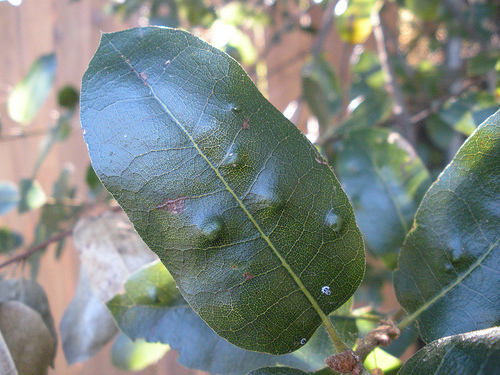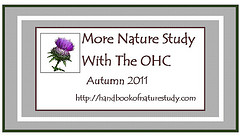 |
| Autumn Scene – Sierra Nevada Foothills |
Our last study for the Autumn series (More Nature Study with the OHC) was one that took us up the mountain to see maples brilliantly colored against the autumn sky. The Bigleaf maples are ablaze with color right now and so easy to spot since they grow in and among the evergreens of the Sierra Nevada. Our field guide says that Bigleaf maples grow at an elevation of 2,000 – 5,000 feet so we live right at the lower edge of where they naturally occur.
 |
| Perfect spot to stop and observe some Bigleaf Maples |
We stopped alongside the roadway to gather a few leaves and take some images. When I opened the car door…Mmmmmm…it smelled like fall. I hope I don’t ever stop remembering to slow down enough to drink in the fragrance of autumn leaves, damp and woodsy.
 |
| Lobed leaves, turning yellow-green |
Now to the part that I have to be humble about. When I wrote the Maple Seed Challenge months ago I thought that this would be the time to gather seeds. Turns out after some direct observation and some reading in my tree book….that this may not be the right time for maple keys so now that we know where to find our little grove of maples, we will revisit it in the winter to see if can see any changes.
We decided that we might as well observe and learn more about the leaves of the Bigleaf maple.
We brought one really big leaf home and measured it…a little less than twelve inches across. Our field guide says that the leaves should be 16-14 inches in length including the stalk so that is in line with what we found. Mr. B decided to start the advanced notebook page with the field guide information but wait on sketching the maple keys until we gather some at a later date.
On another big leaf note….
How about this gigantic catalpa tree leaf that we found at my mom’s house last weekend? Isn’t it glorious? Amanda took a quick photo of me holding the leaf and I thought you might get a kick out of seeing it, especially after seeing the maple leaf and thinking THAT was big. My little three year old grand-niece said, “What is that?” I told a it was a really big leaf and she laughed. I miss having little ones around who have lots of questions and everything is new and interesting.
Sigh, that finishes up the autumn challenges for now. This season of nature study went by entirely too fast!



